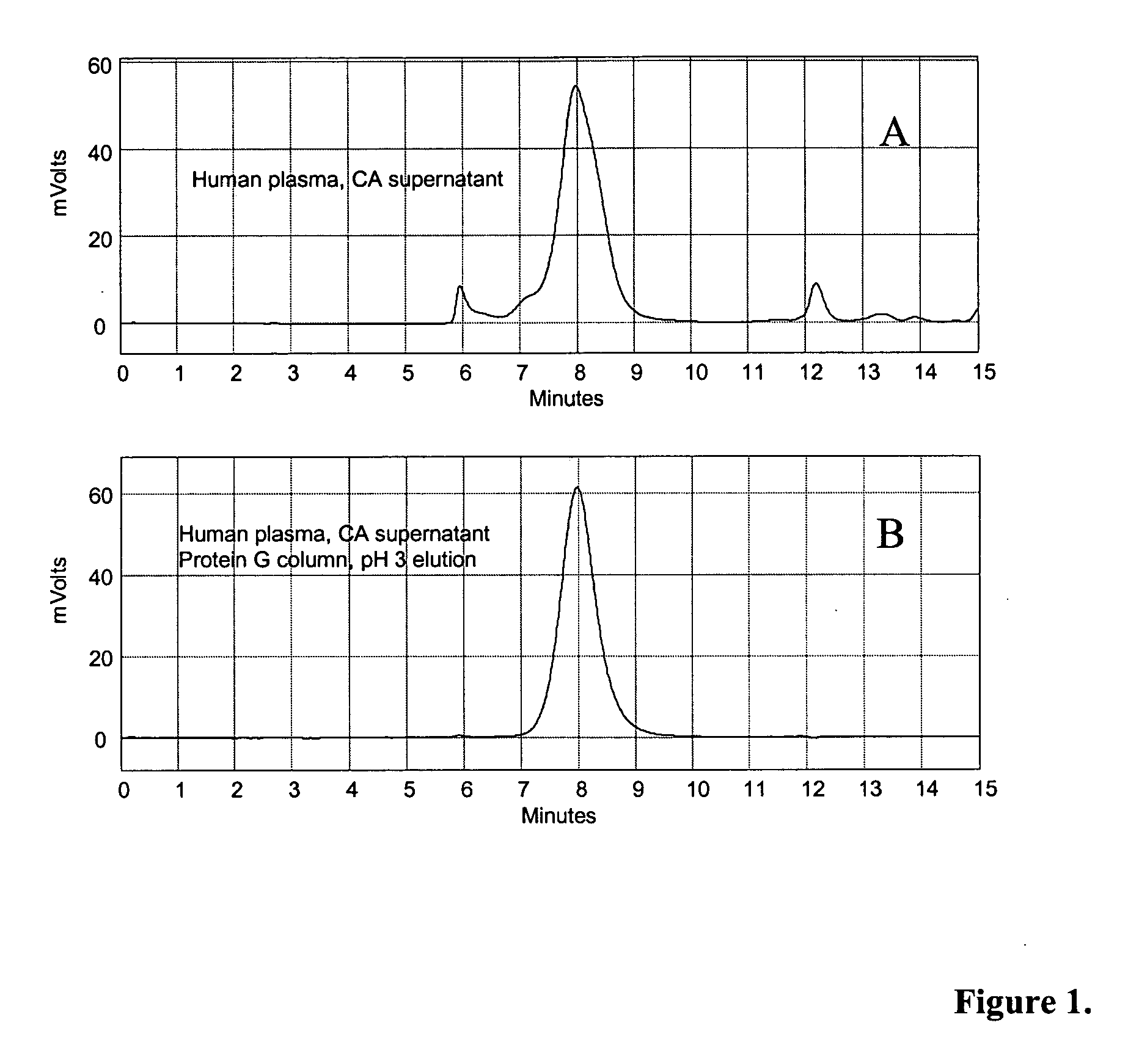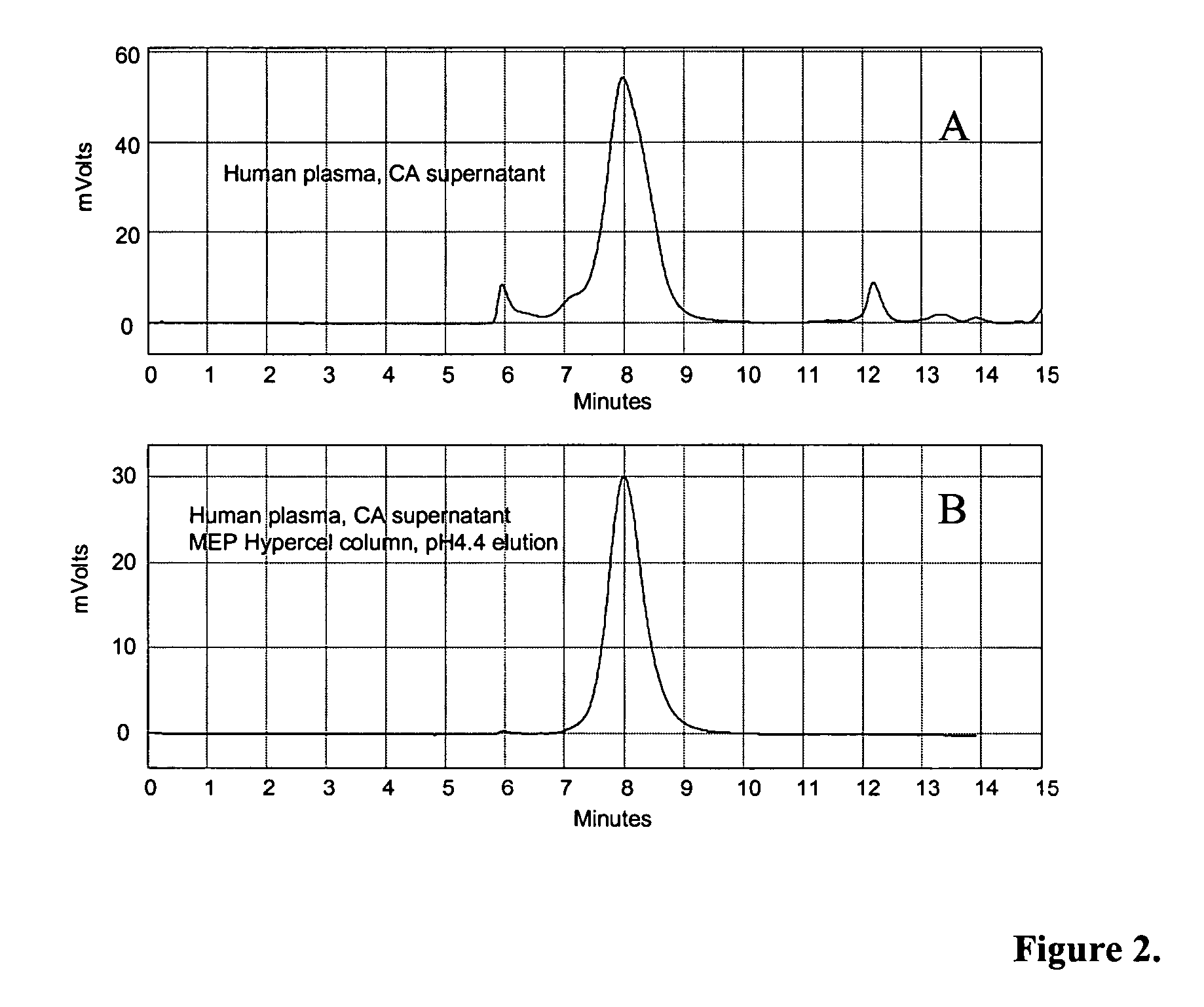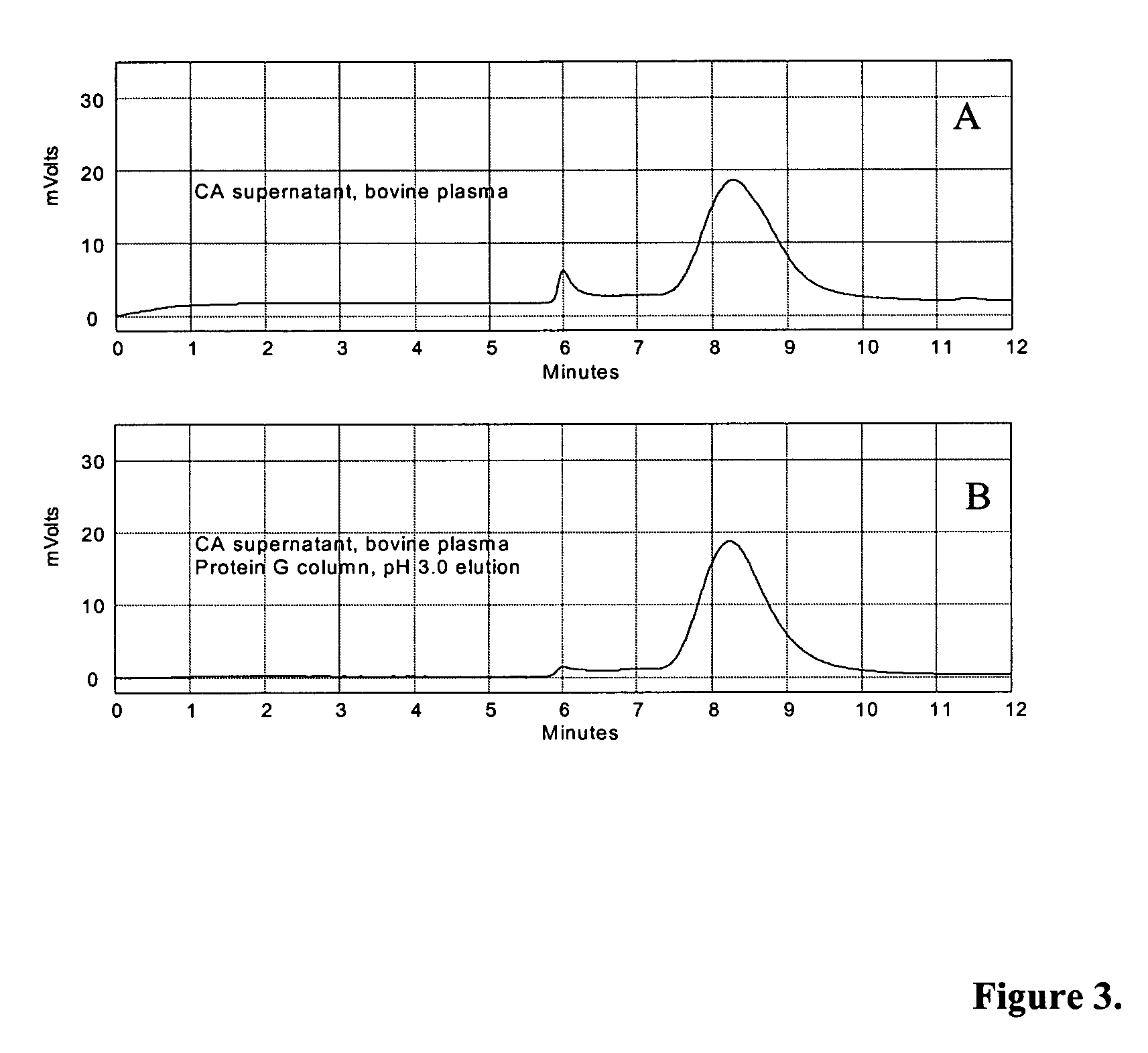Methods for immunoglobulin purification
a technology of immunoglobulin and purification method, which is applied in the field of purification methods of immunoglobulin, can solve the problems of contamination of purified products, large feedstock volumes, and methods of production and purification
- Summary
- Abstract
- Description
- Claims
- Application Information
AI Technical Summary
Benefits of technology
Problems solved by technology
Method used
Image
Examples
example 1
Purification of IgG by Caprylic Acid Precipitation and Affinity Chromatography
[0114] In a first purification technique, human plasma or bovine (wild type or transgenic) plasma was pH adjusted to 4.5 with the addition of 15% acetic acid, and then treated directly with 6% (v / v) CA at pH 4.5 for 30 minutes at 20-25° C., with constant stirring. The feedstock was then centrifuged at 6,000 rpm with a GSA rotor at room temperature. The insoluble material was discarded, and the pH of the supernatant was adjusted to approximately pH 7.5 to 8.0 with addition of 1M Tris or 1N NaOH. The pH-adjusted feedstock was then filtered through a 0.22 micron filter and applied to IgG affinity resins such as Protein A Sepharose™, Protein G Sepharose™, or MEP HyperCel™. After washing with PBS or 20-50 mM Tris-HCl, pH 7.5 to 8.5 in the presence or absence of 0.15 M NaCl, IgG was eluted using low pH buffers. 50 mM glycine-HCl, pH 3.0 buffer was used for Protein A and Protein G resins, while 50 mM sodium acet...
example 2
Purification of IgG by Caprylic Acid Precipitation and Affinity Chromatography Using CA / Total Protein Ratios
[0119] In order to get consistent recovery of IgG and removal of other contaminating proteins, the amount of CA added into a feedstock was calculated based on total protein. In this example, total protein concentration was measured by conventional protein assay methods and CA was added to achieve to ratio of CA / total protein of 0.75 to 2.25.
[0120] Table 2 shows the total protein recovery and BSA concentrations in the feedstocks pre- and post-CA treatment as measured by an ELISA kit from Cygnus. For CA precipitation with undiluted bovine plasma, the pH of the plasma was adjusted to 4.8, and CA was added to achieve a ratio of CA / total protein as shown and mixed vigorously. For CA precipitation with diluted plasmas, the plasma was diluted with appropriate amount of 60 mM Na-acetate, pH 4.0, followed by an adjustment to a final pH of 4.8. In both cases, samples were incubated at...
example 3
The use of rProtein A Chromatography in Combination with Low pH Washes to Separate Human IgG from Bovine IgG
[0126] In another technique, purified bovine IgG (purified from bovine plasma through a 5 ml Protein G Sepharose™ column) or purified human IgG (purchased from Bethyl Lab) was applied onto a 5 ml HiTrap rProtein A Sepharose™ column (from Amersham) which had been equilibrated with 25 ml of phosphate-buffered saline (PBS). rProtein A is a recombinant version of Protein A. Following feedstock application, the column was washed with approximately four bed volumes of PBS and one bed volume of 0.1 M sodium acetate until A280 baseline was reached. The column was then stepwise washed with 10 column volumes of each of the following buffers with different pH values: pH 5.20, 4.80, and 4.46. Each low pH buffer was prepared by mixing different portions of 0.1 M sodium acetate and 0.1 M acetic acid. For example, mixing two parts of 0.1 M acetic acid with eight parts of 0.1 M sodium acetat...
PUM
| Property | Measurement | Unit |
|---|---|---|
| pH | aaaaa | aaaaa |
| pH | aaaaa | aaaaa |
| pH | aaaaa | aaaaa |
Abstract
Description
Claims
Application Information
 Login to View More
Login to View More - R&D
- Intellectual Property
- Life Sciences
- Materials
- Tech Scout
- Unparalleled Data Quality
- Higher Quality Content
- 60% Fewer Hallucinations
Browse by: Latest US Patents, China's latest patents, Technical Efficacy Thesaurus, Application Domain, Technology Topic, Popular Technical Reports.
© 2025 PatSnap. All rights reserved.Legal|Privacy policy|Modern Slavery Act Transparency Statement|Sitemap|About US| Contact US: help@patsnap.com



